Hellraiser has always held a special place in the hearts of horror fans, but especially queer ones. While the original 1987 film was never expressly queer, rather it was innately so. Born of the mind of Clive Barker and directed by him, the movie was inspired in part by his time working as a rent boy and visiting London leather bars during his youth. It was also an outlet for his anxieties about the cost of coming out, which he channeled into the novella Hellbound Heart upon which the film is based. It shows in every frame. From the aesthetic of the Cenobites, taken quite literally from queer culture, dripping of leather and body modification, to Frank’s pursuit of forbidden pleasures, it screamed, not whispered, its queerness for anyone who had the ear and the life experience to listen.
Despite being released on video rather than theatrically at the time, it quickly gained cult status and spawned a sequel that enriched the mythology, a third film that tried to turn its Hell Priest into a Freddy Kruger-like wisecracking character, and a fourth film that took that central character, also known as Pinhead, into space. Beyond that, well, it’s best we don’t speak of the other six sequels.

So it was with great anticipation (and some dread) that fans awaited the new Hellraiser. While plot details were kept carefully under wraps in the lead-up to the film’s release, there were a few bits of information that fans could weigh against their anxieties. The director helming this “reimagined” version is David Bruckner, whose previous film, The Ritual, attested to his ability to craft a terrifying monster film, and The Night House, a deeply resonate psychological horror, proved that he was a master of tension. Together, it seemed he might be just the right fit to elevate the fallen franchise to its former glory.
While some feared this would be a simple remake, the movie is very much a reimagining pulling mythology and inspiration from the novella as well as the first two films. It focuses on a young addict named Riley (Odessa A’zion) who ends up in possession of a puzzle box, which acts as a conduit to summoning the Cenobites for punishments and, in their estimation, rewards. Without realizing the stakes, she begins unlocking it and soon she is face-to-pin-covered-face with Pinhead.

Another point of contention for many was that Doug Bradley, who originated the role of Pinhead, would no longer be donning the black cloak and pins. Instead, the iconic villain would be portrayed by trans actress Jamie Clayton. Fans of the novella immediately recognized what Bruckner was doing as, in the novel, Pinhead was an ambiguously gendered being.
It was a risk, but Bruckner’s gambit to cast Clayton in a role originated by Bradley pays off. Clayton brings an erotic menace that has been sorely lacking from the franchise since its first two entries. She is sinewy (quite literally) and sensual, radiating a sense of doom and curiosity in equal measure. She’s exquisite in performance and appearance.
The Cenobites have always been scene stealers, but smartly the film takes their design in a new and horrifying direction. Gone are the black leather gowns; in their place is simply flesh, tortured and twisted and carved away. It’s grotesque in its beauty and very much in keeping with the spirit of the original film.

It’s also a new way to transgress, as was the director’s intent. “Bruckner talked a lot about that in the design process,” Adam Faison, who stars as Colin (boyfriend to Riley’s brother Matt, as played by Brandon Flynn) in the film, tells PRIDE. “He’s like, ‘there’s something with our culture, especially in America, with our fascination but also like a taboo feeling about nudity. We have such a [discomfort] with it, so he’s like, ‘I’d like to play with just sort of like what if they were completely nude, it just sort of the like, exhibitionism of that and like how that lands for people.’”
While it makes for a wonderfully deviant experience on screen, it could be a little daunting in person. “And you’d be like, Whoa, oh my god! Sometimes...you didn’t know whether or not you were allowed to look at them because they were nude. And...they’re so real, that you’re almost like, am I allowed to look at all of you?” laughs Faison.
His pain proves to be our pleasure; what could be more apropos of Hellraiser than that?

While the Cenobites’ design takes the film in a new direction, it’s not the only way this version modernizes the story.
The original film came out in 1987 at a time where LGBTQ+ elements had to remain subtextual, but thankfully not so in 2022. This reimagining is unabashedly queer, which was particularly meaningful for Faison, who himself is LGBTQ+ identified.
Before reading the script, he was repeatedly promised that the queer characters were indeed central to the plot and fully realized people. Still, he was worried. “You’re like, am I gonna be treated as another token gay character, that’s like a joke? And then they get killed off in some funny way. We’ve seen that so many times and it’s just kind of exhausting,” Faison shares. However, he was relieved to find he could trust the director to create a film not only true to the horror elements of Barker’s story, but the queer ones as well. “Bruckner is not queer himself, but he was very collaborative with Brandon and I and Jamie and just all of us about getting really specific and nuanced with it and I think that that’s very rare,” he says. “You know, especially sometimes the straights, they’d be like, you know, what, you just have to tick a box. But like Bruckner was like, I’m a full-in ally.”
Ultimately, it feels in keeping with the kind of film that Barker himself might have made should the era he was directing in have been as open to queer themes and characters. He was heavily involved with this version (unlike many of its other sequels) and it shows. It’s transgressive, queer, and perverse, but also speaks to a more modern sensibility that asks what if your final girl was actually a final gay?

Yes, it’s a Grand Guignol of gore and body horror, but one that thankfully once again has something to say beyond the spectacle (as monstrously beautiful as it is), enriching it thematically. While the story itself might not be very complex, but layered over it are a series of stunning set pieces that shock and titillate, and perhaps even more importantly it's a celebration of the world that Barker created. In both Riley and Colin, the film introduces new characters to root for and build a franchise around, should they choose to. And of course, Clayton’s Pinhead is a top-tier villain for a new generation that we would happily see summoned back to the screen as soon as possible.
Hellraiser is streaming now on HULU. Watch our full interview with Adam Faison below.

RELATED | Interview With the Vampire Stars Jacob, Sam, and Bailey On Their Steamy New Show
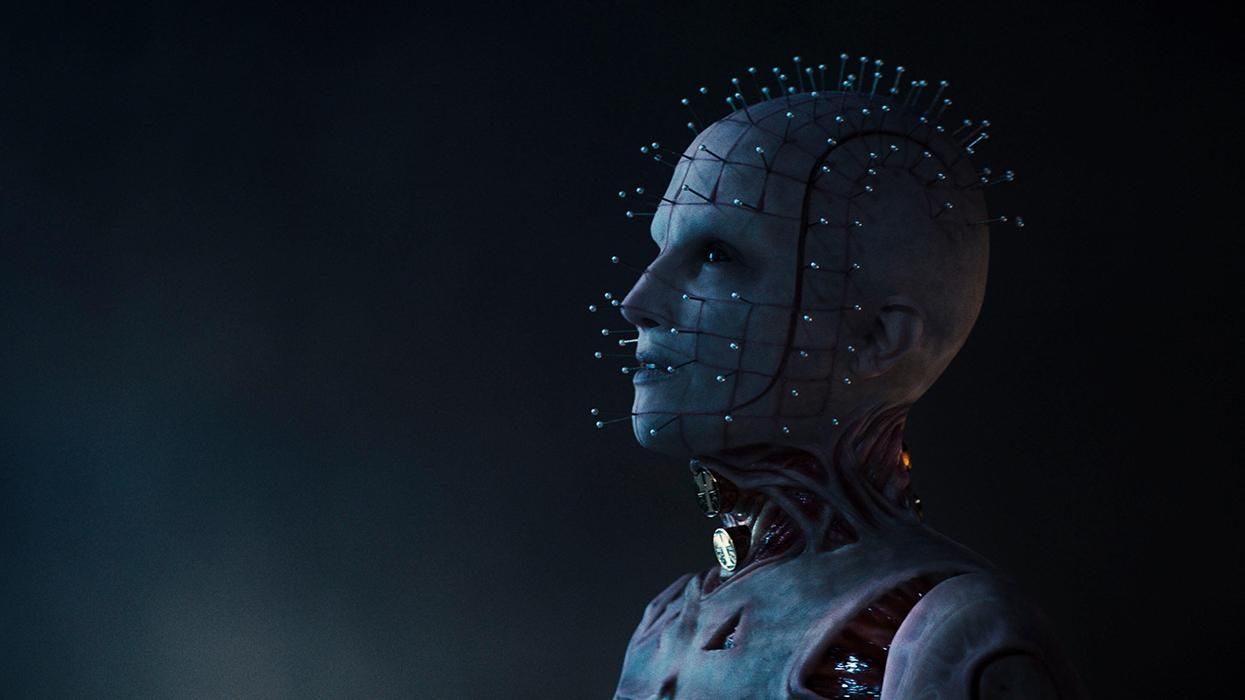






















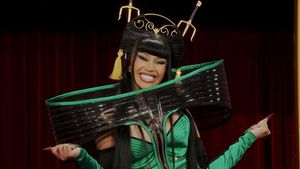


















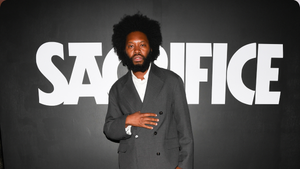



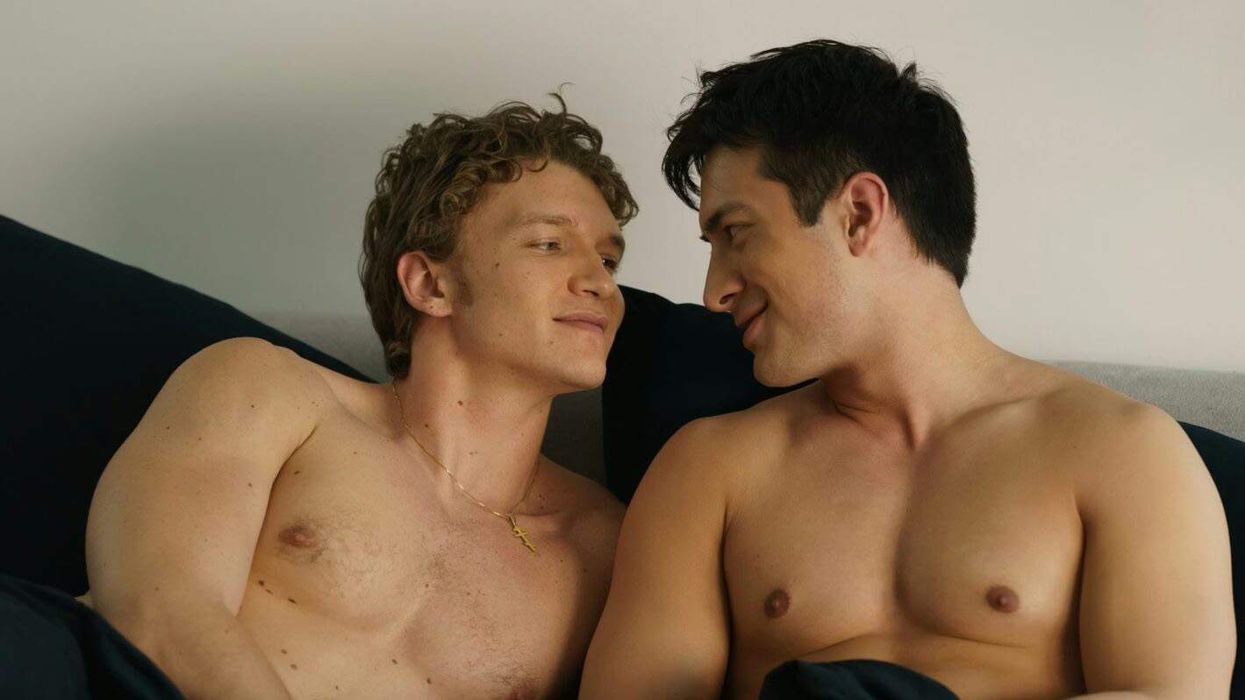
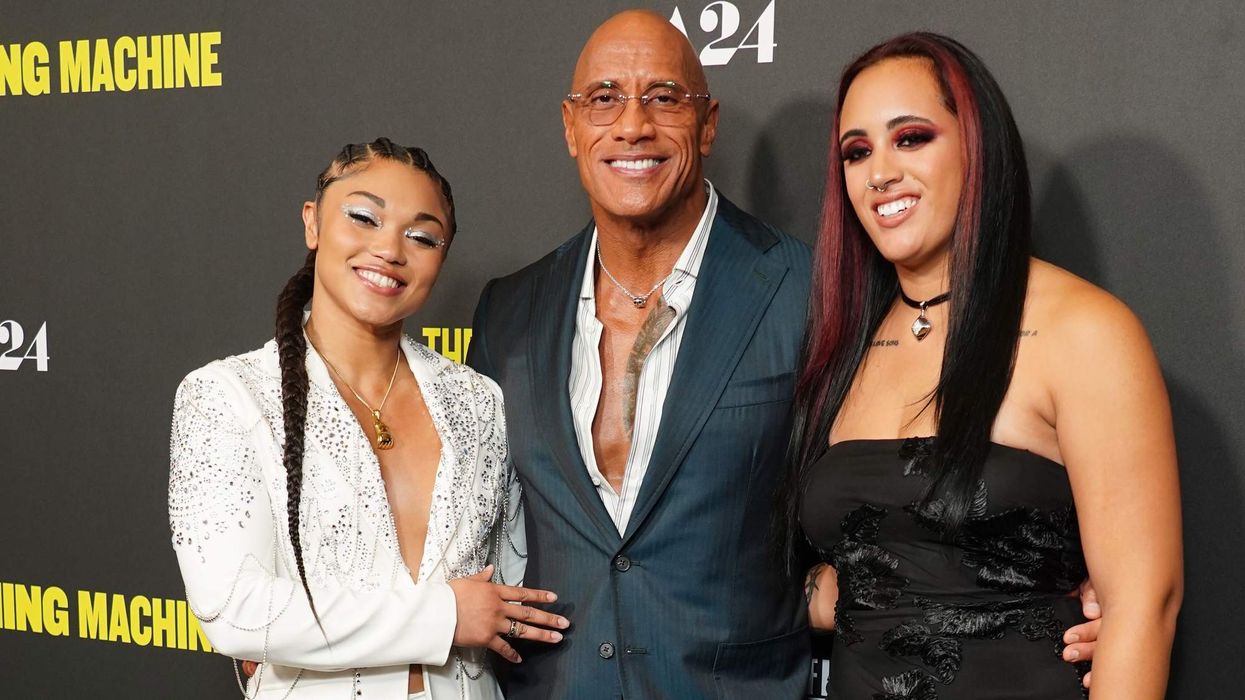
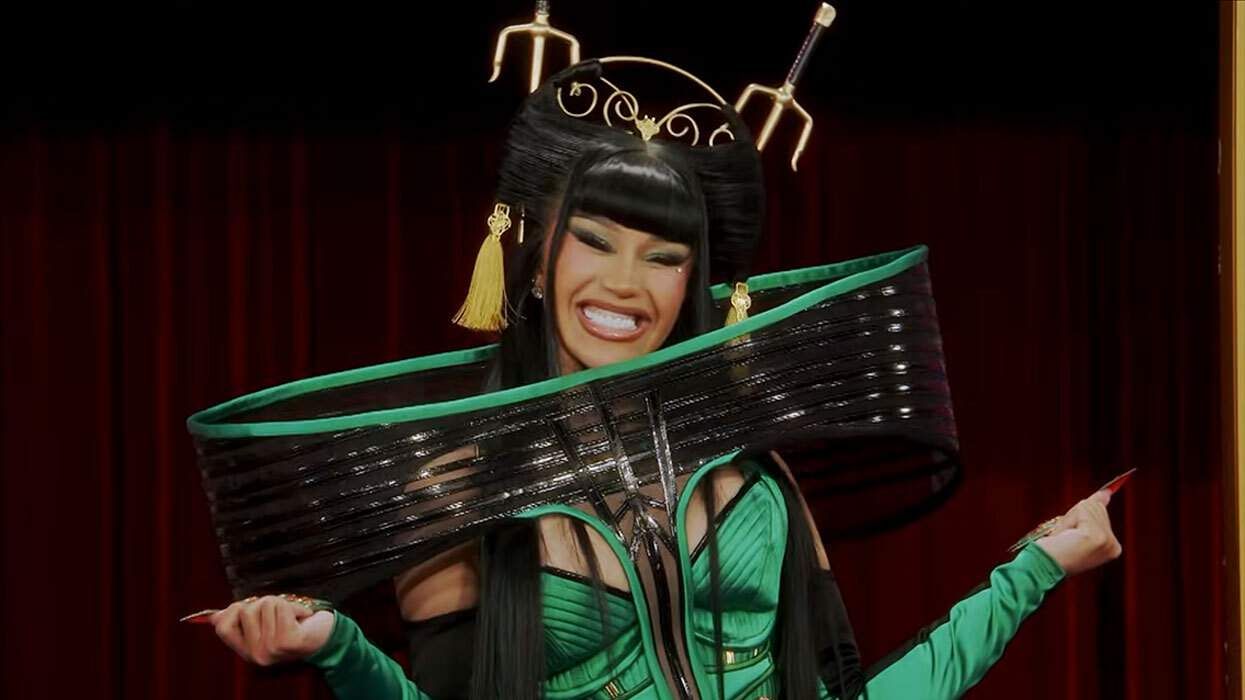
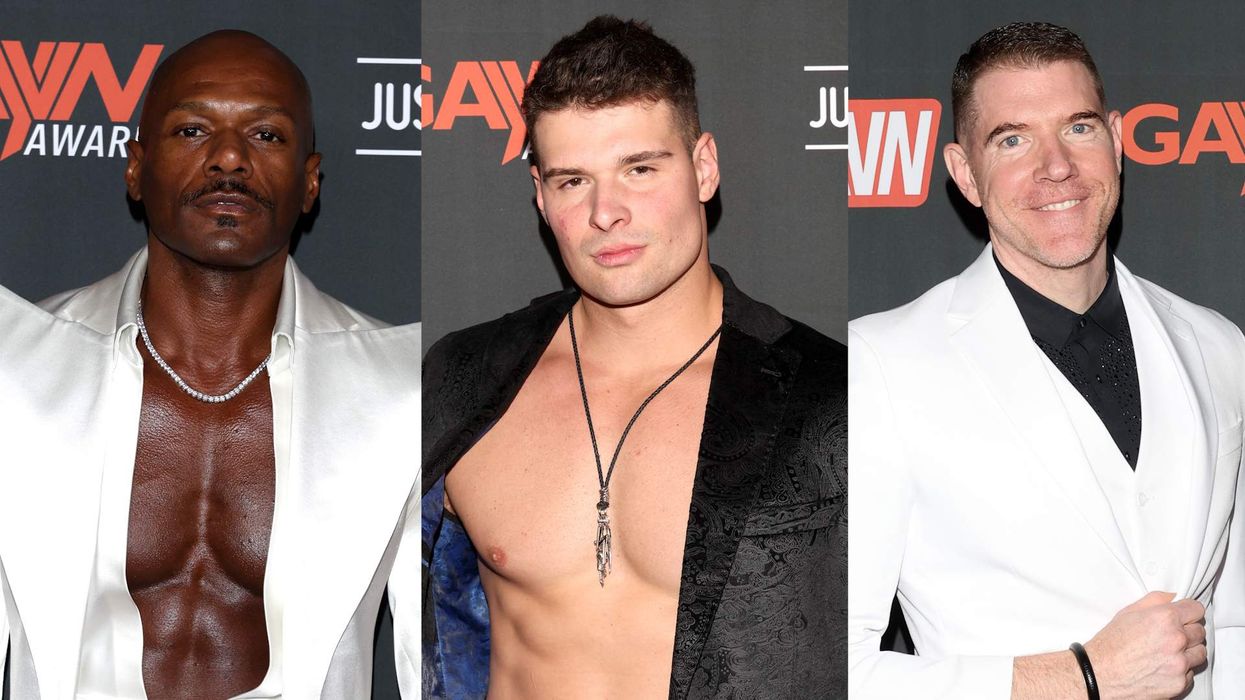


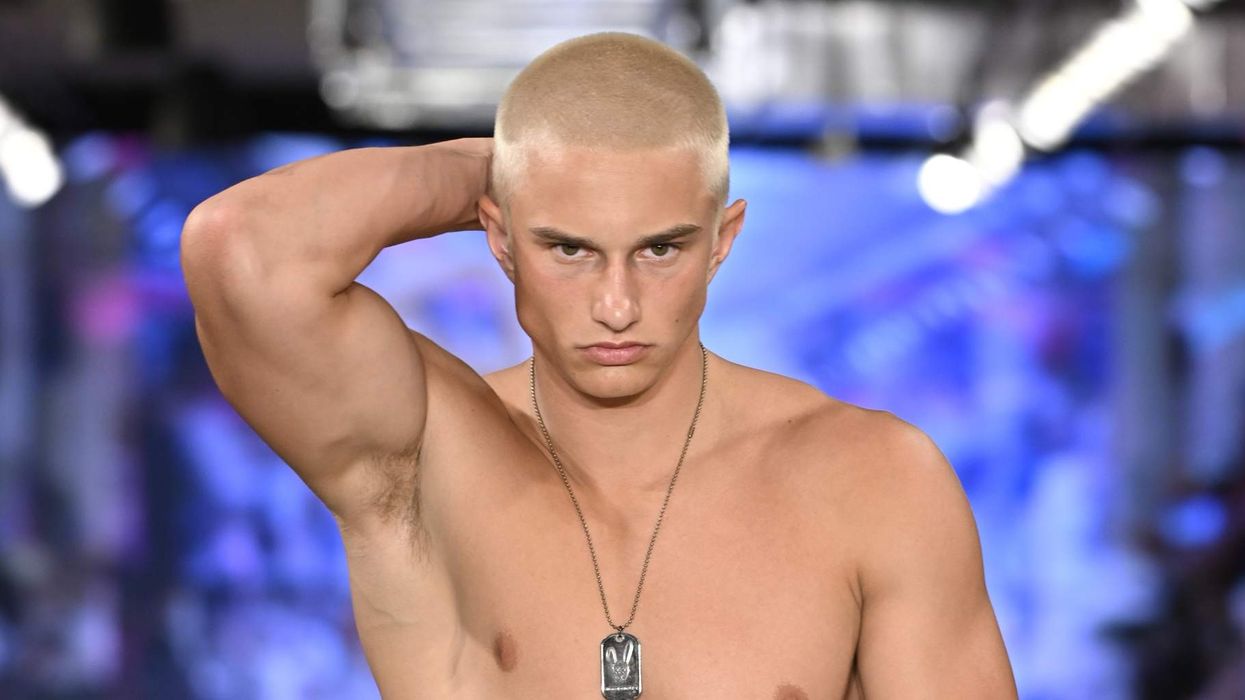



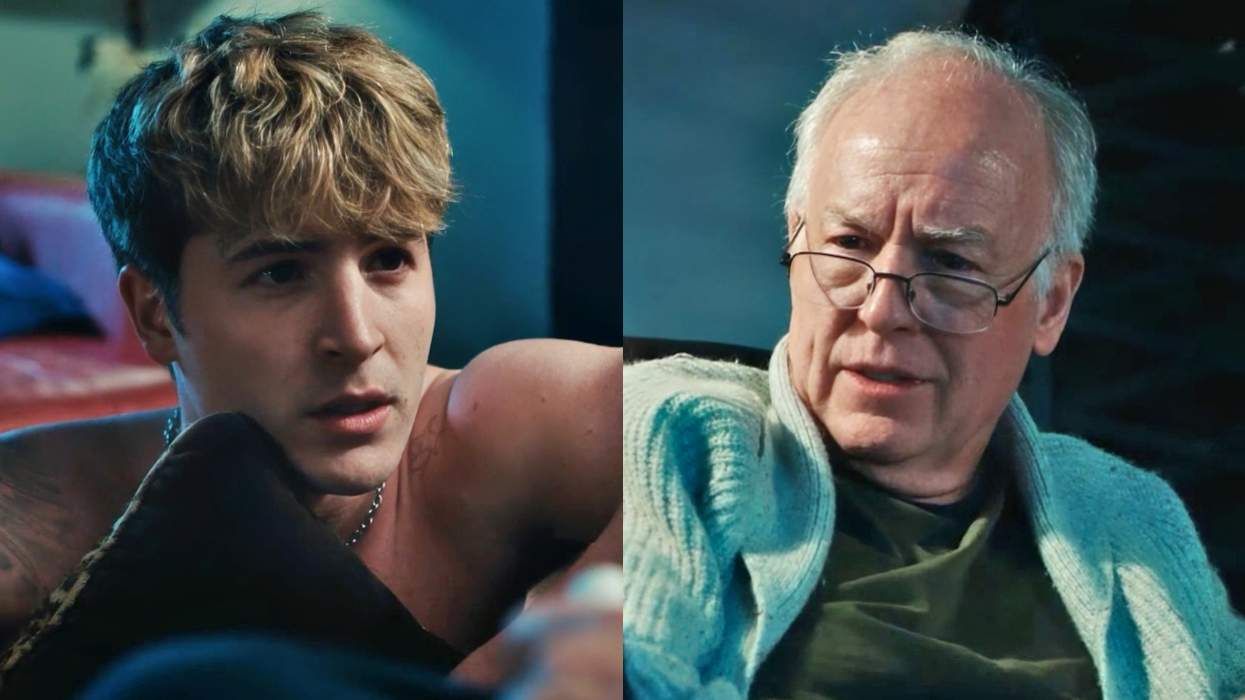
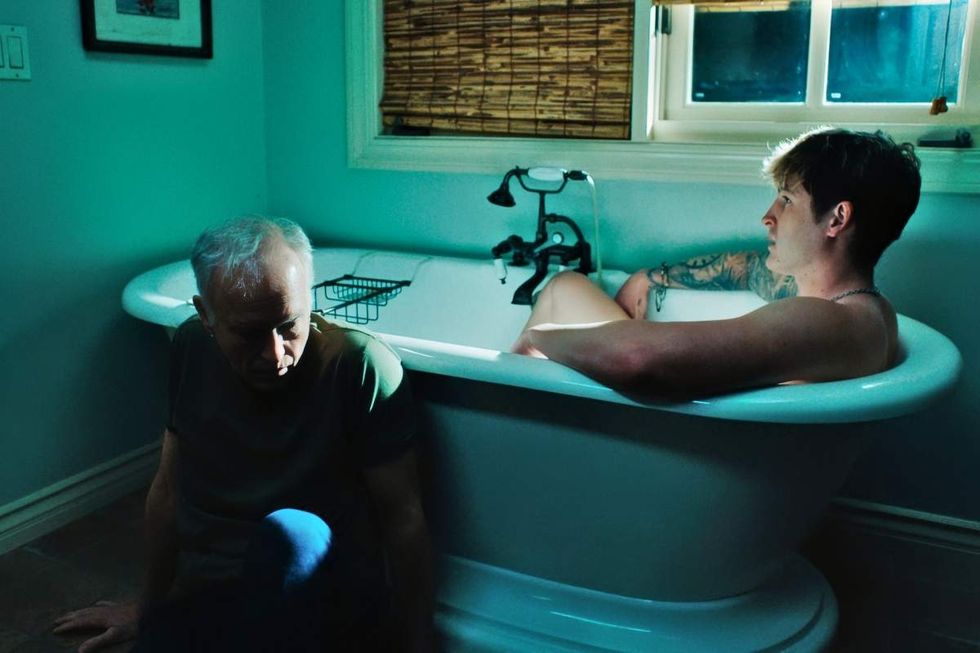 Reed Birney as Hank Grant and Kieron Moore as Aaron Eagle in Blue Film.Fusion Entertainment
Reed Birney as Hank Grant and Kieron Moore as Aaron Eagle in Blue Film.Fusion Entertainment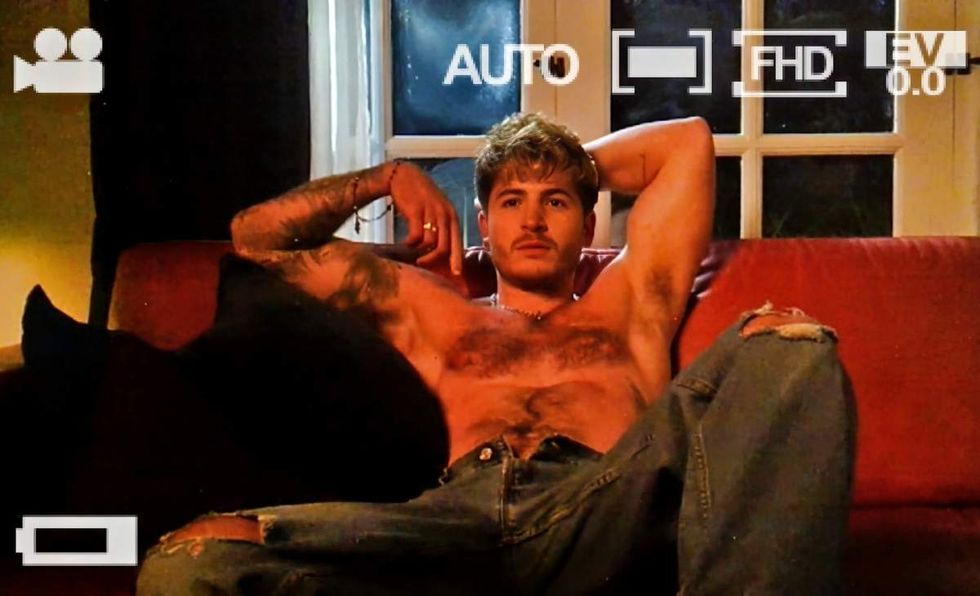 Kieron Moore as Aaron Eagle in Blue Film. Fusion Entertainment
Kieron Moore as Aaron Eagle in Blue Film. Fusion Entertainment 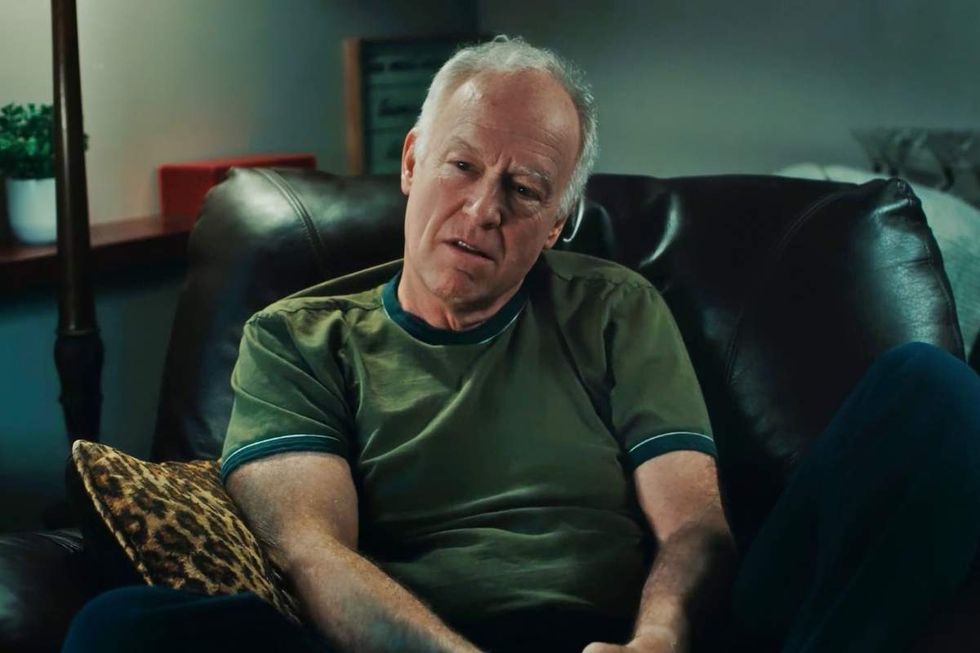 Reed Birney as Hank Grant in Blue Film.Fusion Entertainment
Reed Birney as Hank Grant in Blue Film.Fusion Entertainment Kieron Moore as Aaron Eagle in Blue Film. Fusion Entertainment
Kieron Moore as Aaron Eagle in Blue Film. Fusion Entertainment 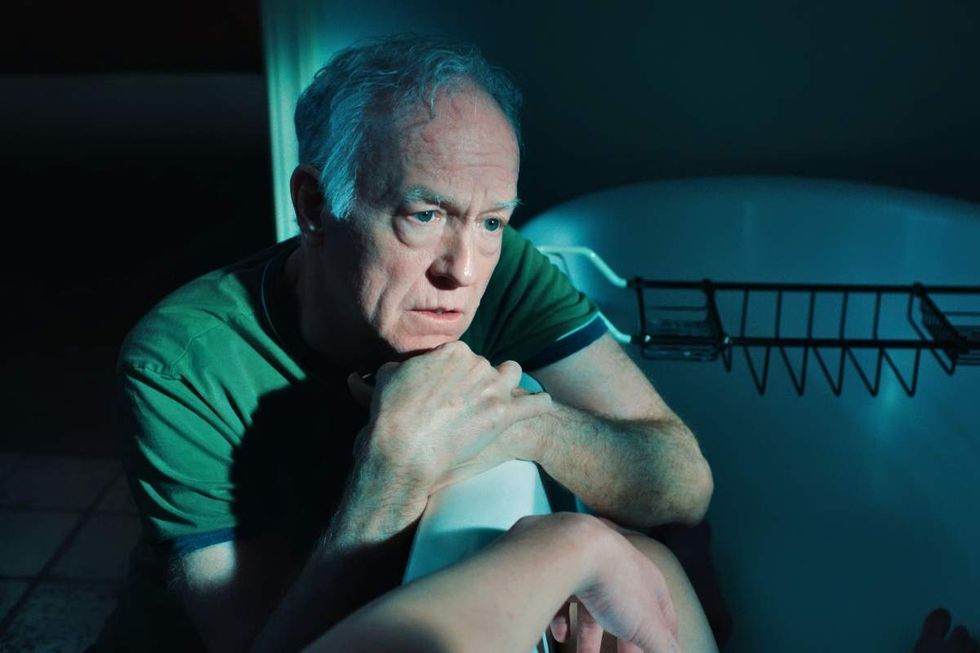 Reed Birney as Hank Grant in Blue Film.Fusion Entertainment
Reed Birney as Hank Grant in Blue Film.Fusion Entertainment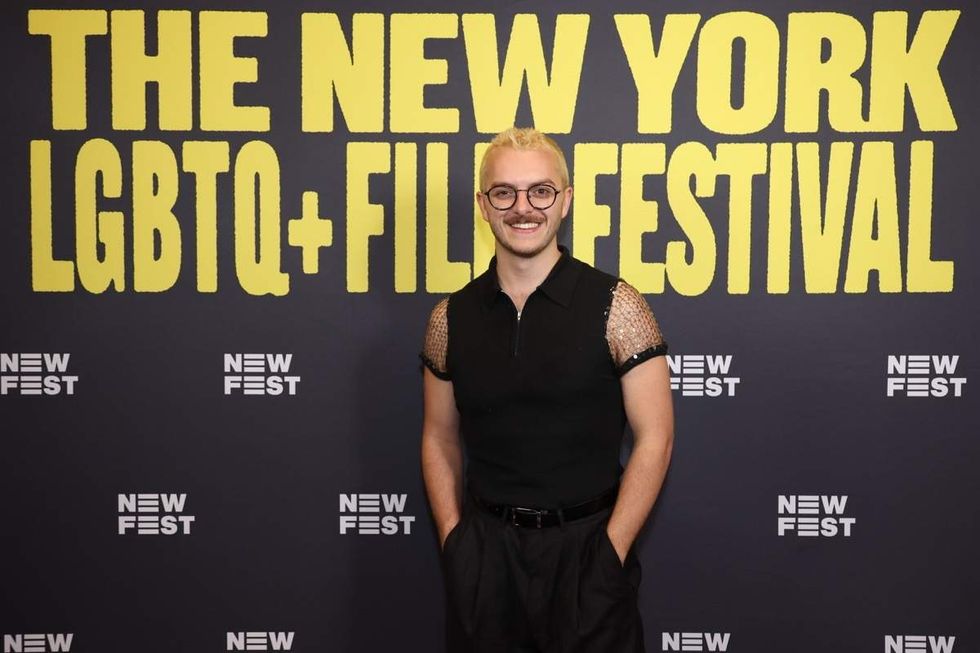 Director Elliot Tuttle at the premiere of Blue Film at 2025 NewFest at SVA Theater in New York City.Rob Kim/Getty Images
Director Elliot Tuttle at the premiere of Blue Film at 2025 NewFest at SVA Theater in New York City.Rob Kim/Getty Images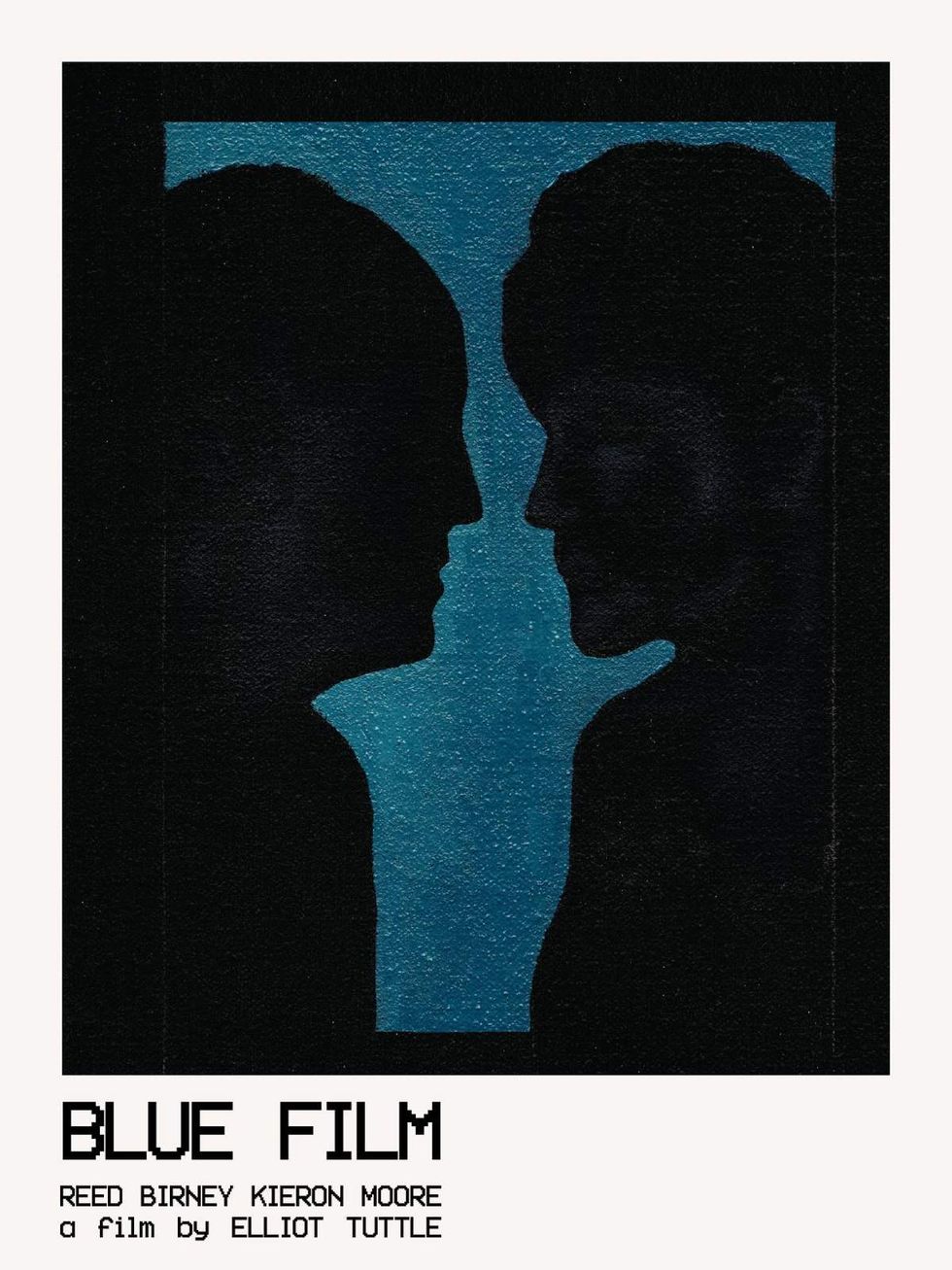 The official poster for Blue Film.
The official poster for Blue Film.






